Why is my spider plant dying? Experts reveal the common causes and solutions
If your spider plant looks lacklustre, rescue it with these pro tips

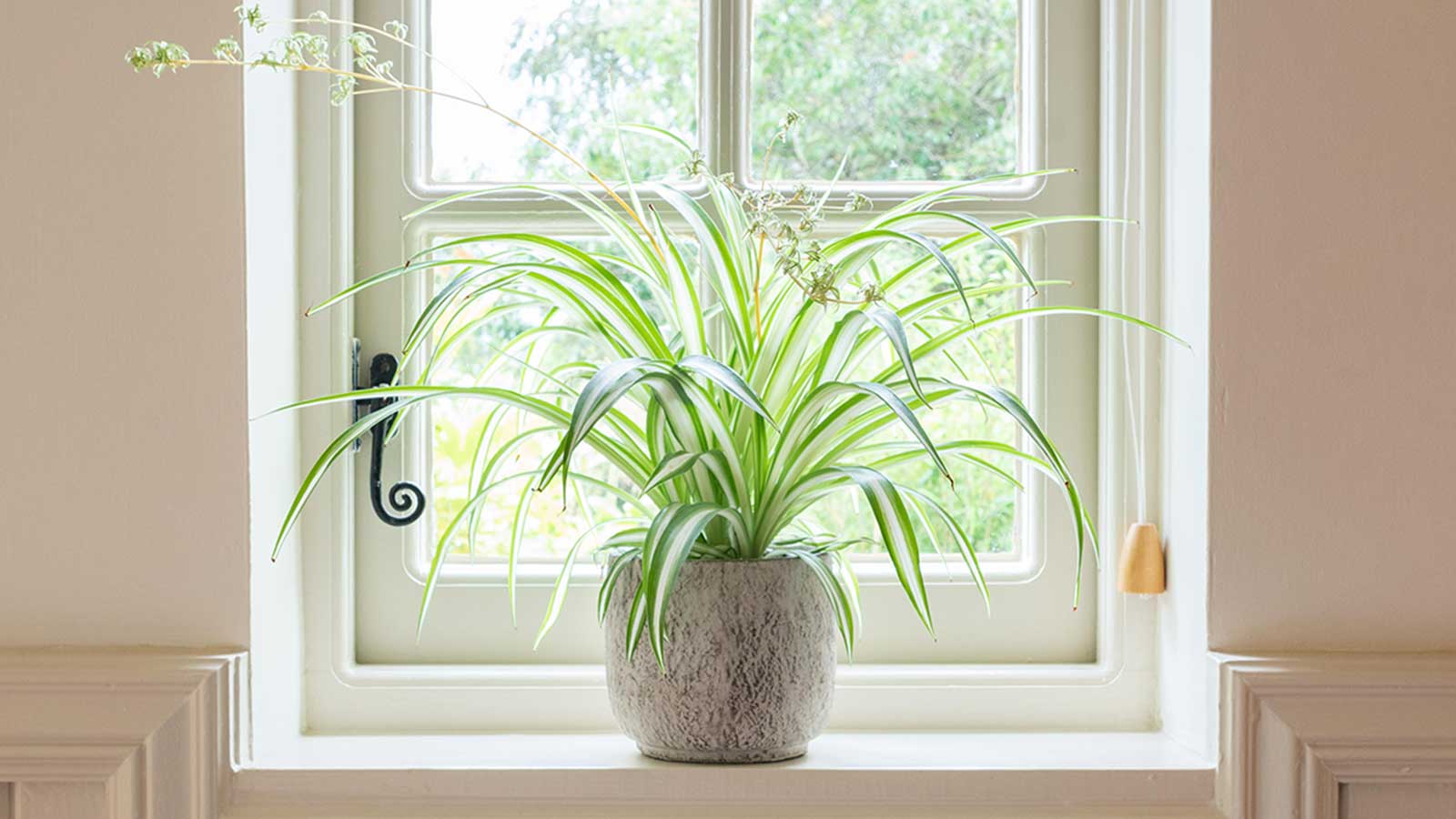
Q: I have grown a few new spider plants by propagating a handful of spiderettes, given to me by a friend. They put on new growth quickly, but now each one is looking lackluster, with brown and limp leaves. What's gone wrong, and can they be rescued?
A: Spider plants, or Chlorophytum comosum, are generally considered a good houseplant for beginners as they are fast-growing, easy to propagate (as you experienced), and relatively low-maintenance. Still, as with any plant, problems can occur when the growing conditions aren't quite right. On the bright side, if you act quickly, you may be able to save them.
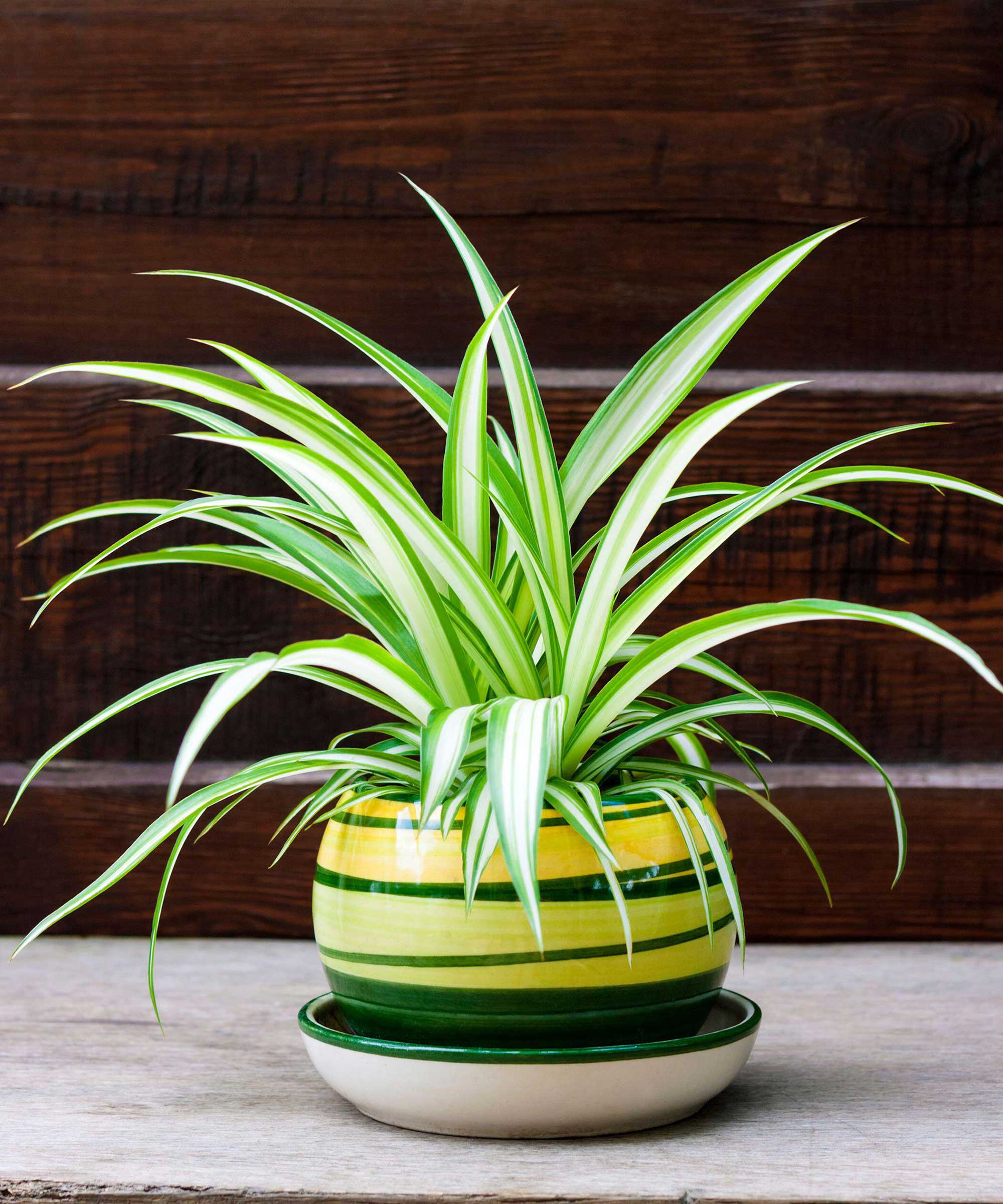
Many spider plants have variegated leaves
Reasons and solutions for a dying spider plant
Look out for these common problems that can lead to unhappy indoor plants.
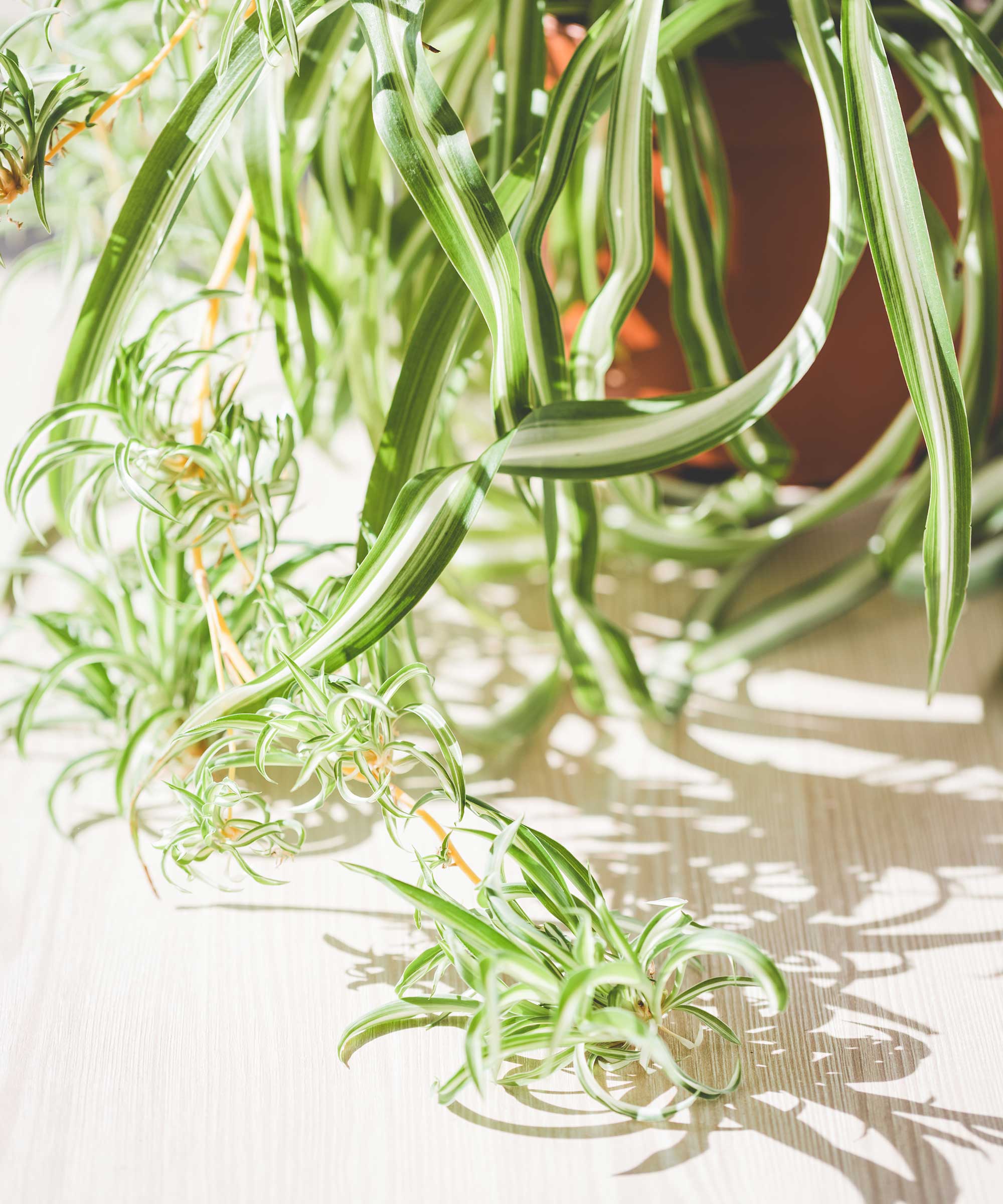
Spider plants produce 'babies' that can be potted up
Incorrect watering
Watering houseplants correctly is key if you want them to thrive. And while they do need a drink from time to time, one of the most common mistakes is overdoing it.
'Spider plants prefer to dry out a bit between waterings,' says plant expert Mitchell Robertshaw. 'If the soil is kept too wet, the roots can rot.' You can check if your plant needs watering by sticking a chopstick in the soil, all the way to the bottom of the pot, says houseplant expert Vladan Nikolic. 'If the chopstick comes out dry and clean, it's time to water.'
Drainage is important, too. 'Use a well-draining, porous potting mix amended with perlite (mix two parts of potting soil with one part of perlite), to ensure the soil is aerated,' says Vladan. Also, use pots with drainage holes to reduce the risk of overwatering, he adds.
If you've severely over-watered your spider plant, consider removing it from its pot, cutting off any damaged roots, and then repotting it into fresh, dry soil to help it recover.
Design expertise in your inbox – from inspiring decorating ideas and beautiful celebrity homes to practical gardening advice and shopping round-ups.
Note that while too much water in the soil can cause problems, spider plants do enjoy higher humidity levels. 'Mist the plant occasionally, place it near a humidity tray, or use a room humidifier,' suggests Kayla Gajdascz, the co-founder of Mental Houseplants.
This dotted glass mister from Terrain is ideal for keeping houseplants happy, and it's pretty, too.
Top tip: Too much water can also cause succulents to struggle.

Mitchell Robertshaw is a US-based garden enthusiast and the founder of YourBalconyGarden.com, a website showcasing practical methods for turning limited urban spaces into functional green areas.

Vladan Nikolic, otherwise known as Mr. Houseplant, is a houseplant expert with over 10 years of experience. He is the founder of the houseplant care blog MrHouseplant.com and also an influencer who helps newcomers in the houseplant world become great plant parents. You can find him on Instagram, TikTok, Youtube, Facebook, Twitter and Pinterest.

Misting is beneficial for spider plants
Not enough nutrients in the soil
Spider plants' rapid growth can quickly deplete the nutrients from their potting soil. So, to restore all that goodness that they need to grow healthily, they benefit from occasional fertilization.
Mitchell suggests applying a balanced, water-soluble fertilizer every 4-6 weeks during the growing season.
'Reduce or stop feeding during the dormant season (fall and winter),' recommends Kayla.

Kayla Gajdascz is the co-founder and president of Mental Houseplants, a company dedicated to spreading the positive impact that plants have on our mental health. One way that the company does this is by partnering with NAMI, the National Alliance on Mental Illness (the Massachusetts chapter), and donating a portion of every sale to them.
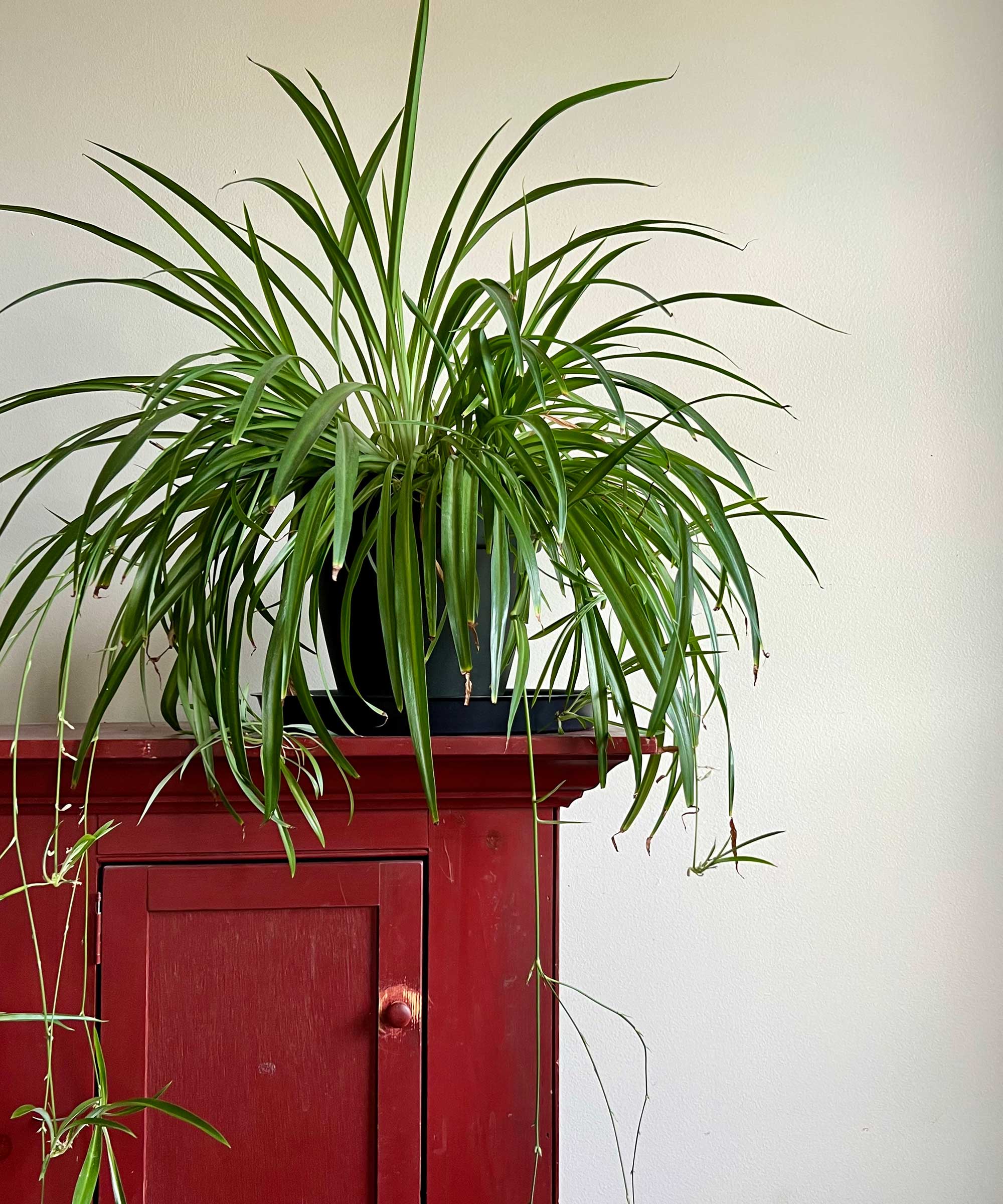
Fertilizer will give spider plants a boost during the growing season
Inadequate lighting
'While spider plants are tolerant of a wide range of lighting conditions, they thrive in bright, indirect light,' says Mitchell. 'If the plant is receiving too little light, its growth may become leggy, and its vibrant color may fade.' it also might be a reason your spider plant is turning yellow. Kayla adds that direct sunlight should be avoided, too, as it can scorch the leaves.
Moving your plant to a more suitable location may help it bounce back to its former glory. Bear in mind that you might need to move it again as the seasons change, to keep the lighting optimal.
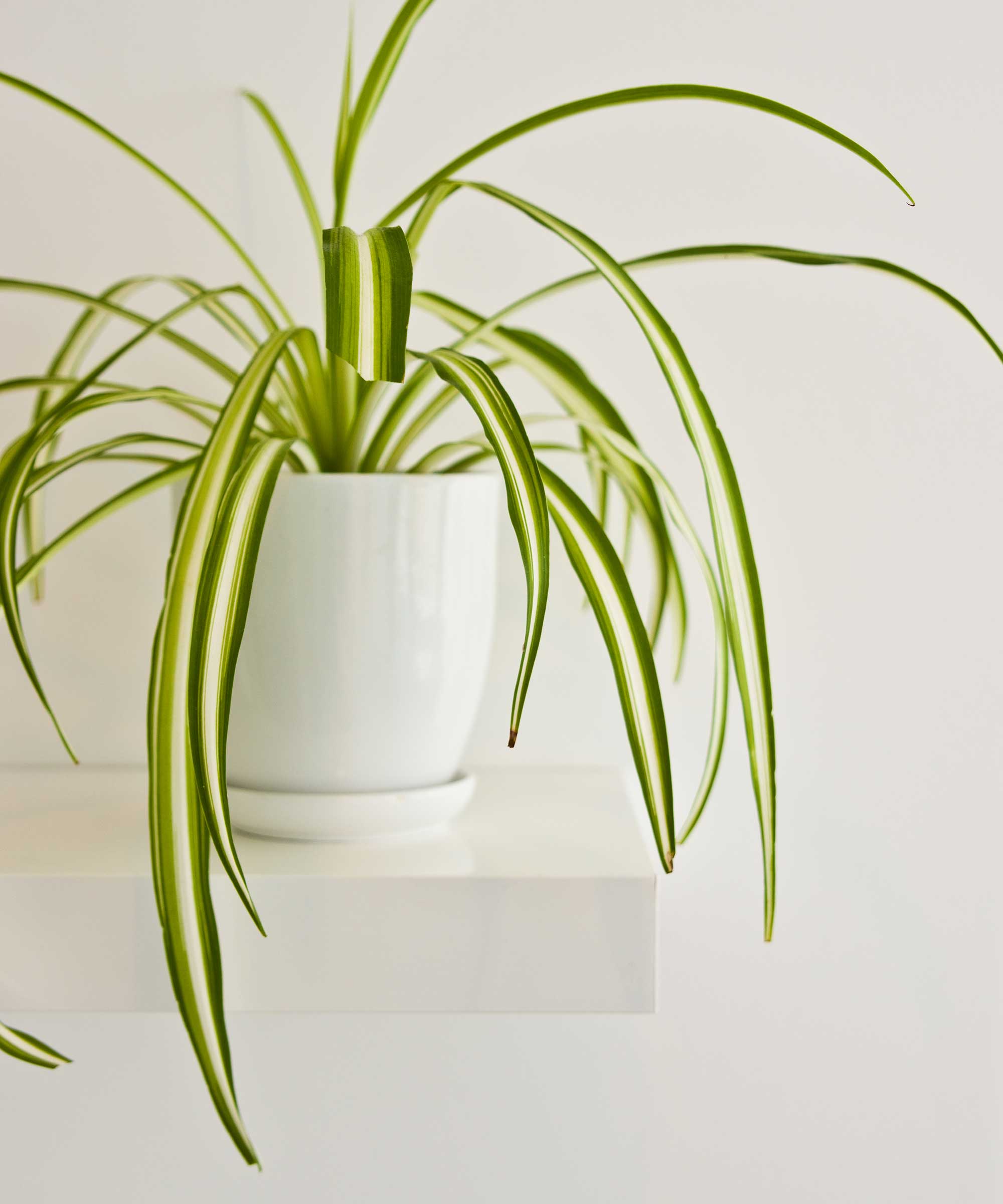
Avoid too much sunlight exposure for your spider plant
FAQs
Do you need to repot spider plants?
'Spider plants enjoy being somewhat pot-bound, but will eventually need a larger pot,' says Mitchell Robertshaw of YourBalconyGarden.com. 'If the plant has ceased growing or water runs straight through the pot, it might be time for a larger home.'
Can pests cause problems with spider plants?
'Spider plants are resilient but not immune to pests like spider mites,' Mitchell Robertshaw says. 'Checking regularly for pests and treating with insecticidal soap as needed can prevent minor issues from becoming major problems.'
Should you remove dead leaves from a spider plant?
Yes, dead leaves can be snipped off at the base to improve the look of your spider plant. Remember to clean your scissors or pruners, first. You can cut brown tips off of leaves too, says houseplant expert Vladan Nikolic.
Spider plants aren't the only houseplants that can be nursed back to health. If you've spotted a wilting pothos, a dying snake plant, or a drooping peace lily in your home, there are steps you can take to try to recover them, too.

Holly started writing about gardening five years ago, and she is a regular contributor to Homes & Gardens. She has also written many gardening features for Woman & Home and Real Homes, too. She has previous experience as a professional gardener, where she helped to plant and maintain private gardens. Holly has also looked after allotment plots over the years and loves to grow her own flowers and veggies from seed. In her spare time, she enjoys visiting local gardens, botanical drawing, and tending to her ever-growing collection of houseplants.